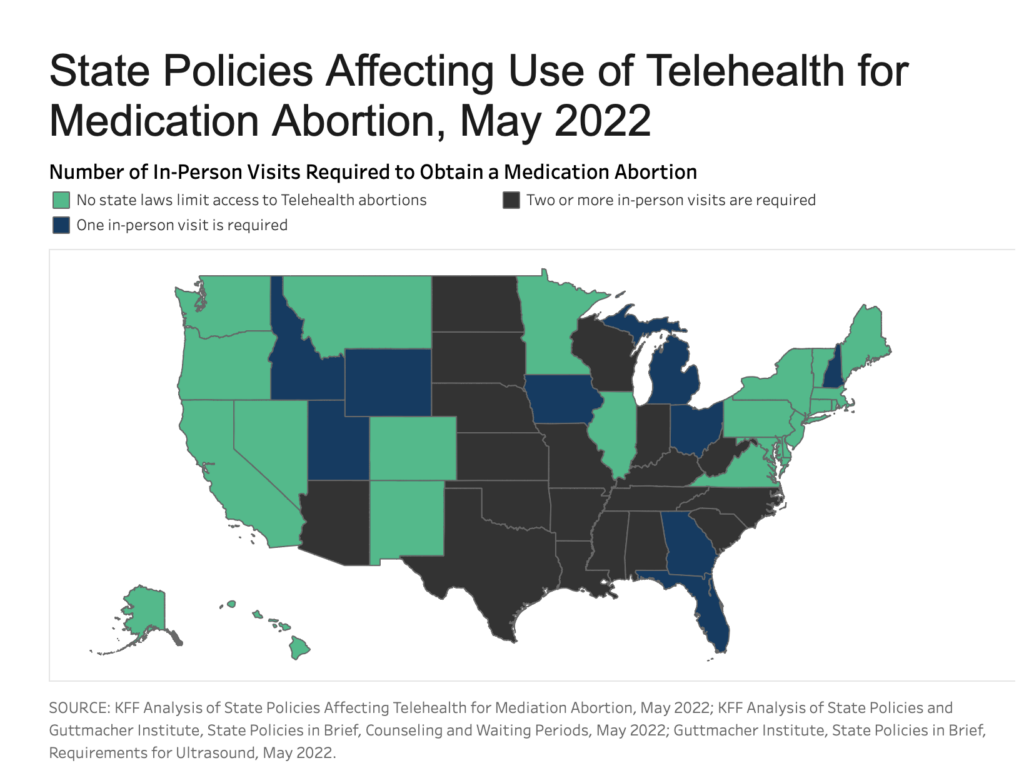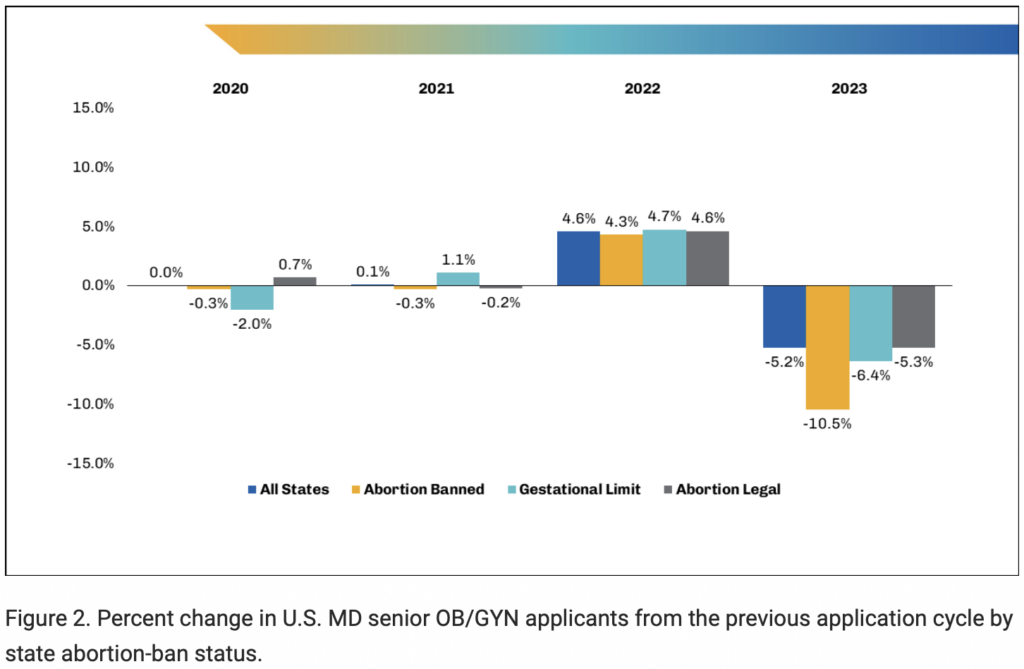24 June 2023 | Healthcare
One Year After Dobbs: Unveiling the Far-Reaching Impact on Abortion Rights
By workweek
A year has passed since the Supreme Court’s majority decision in the Dobbs v. Jackson’s Women Health Organization case, effectively overturning Roe v. Wade. This decision, made in June 2022, has had significant public health consequences as numerous states have enacted some of the strictest abortion laws in history, adversely impacting the health of pregnant individuals.
In this article, I’ll recap the controversial Supreme Court ruling, highlight what has happened since the Dobbs decision, and add my thoughts from a public health and trainee perspective.
What Happened a Year Ago?
In June 2022, the Supreme Court made a majority decision upholding the constitutionality of a Mississippi law that prohibited abortion after 15 weeks of pregnancy with exceptions for medical emergencies or several fetal abnormalities incompatible with life.
Here is a quick timeline of the events leading up to the decision:
- March 2018: Mississippi passed a law prohibiting abortion after 15 weeks of pregnancy with some exceptions. Any physician violating the law would have their medical licenses suspended or revoked. Jackson’s Women Health Organization — Mississippi’s only abortion clinic — filed a lawsuit to block the law, arguing it was unconstitutional.
- November 2018: A federal district court judge sided with the abortion clinic, blocking the abortion law. Mississippi (“Dobbs”) appealed the decision.
- December 2019: A Fifth Circuit Court of Appeals upheld the district court’s ruling. Mississippi appealed to the Supreme Court. Below are the main arguments:

- December 2021: The Supreme Court heard oral arguments over the case, Dobbs v. Jackson Women’s Health Organization. The initial impressions were that the majority of Supreme Court justices would likely vote to uphold the Mississippi law.
- June 2022: The Supreme Court ruled in a majority to uphold the Mississippi law, thereby effectively reversing the Roe v. Wade decision.
What Has Happened Since the Dobbs Decision?
States have been quick to either restrict or protect an individual’s right to abortion since the Dobbs decision. Companies, too, have made stances on abortion rights.
Restricting Abortion
Twenty-five states have enacted laws after the Dobbs ruling that ban all or most abortions. However, many of these states are facing legal challenges related to the constitutionality of these bans as they relate to due process, liberty, and privacy rights.

Fourteen states, including Alabama, Arkansas, and Mississippi, have implemented comprehensive abortion bans with minimal exceptions. Taking even more extreme measures, states such as Texas, Oklahoma, and Idaho, have gone beyond simply banning abortion and have introduced bounty laws, empowering citizens to sue abortion providers if caught providing abortion services. Providers found guilty under these laws face severe penalties, including life imprisonment in Texas or fines surpassing $100,000 in Oklahoma.
The impact of these abortion restrictions on both abortion access and patient well-being has been undeniable. Around 22 million women ages 15-49 live in states where abortion access is severely restricted. Consequently, there were 32,000 fewer abortions between July 2022 and December 2022 (post-Dobbs) compared to the average monthly number of abortions pre-Dobbs.
For those in states with severely restricted abortion access, their experiences have been nothing short of terrifying:
- “Dr. Lisa Harris, Professor of Obstetrics and Gynecology at University of Michigan Medical School, described how a patient treated at her institution for ectopic pregnancy […] had to travel from her home state, Ohio, to Michigan because she could not find a doctor willing to treat her in Ohio after their six-week abortion ban came into effect in June 2022.”
- “In July 2022, a woman had to travel hundreds of miles to a different state for a lifesaving abortion. Though she was experiencing an ectopic pregnancy her doctor would not end the pregnancy because he was ‘worried that the presence of a fetal heartbeat meant treating her might run afoul of new restrictions on abortion.’”
- “In Wisconsin, hospital staff would not remove the fetal tissue for a patient with an incomplete miscarriage for fear that it would violate that state’s abortion ban. She was left to bleed at home for more than 10 days.”
Protecting Abortion
On the other hand, 25 states have moved quickly to protect abortion rights. For example, Minnesota codified abortion rights into state law. Similarly, Michigan voters approved a constitutional amendment to protect abortion rights, which prompted their governor to repeal a near-total abortion ban dating back to 1931. Many of the 25 states have also enacted safe-haven laws that provide protection to out-of-state patients seeking abortions within their borders. This has prompted employers like Amazon and Microsoft to cover travel expenses for abortions if an employee lives in a state with restricted access.
Looking ahead, both Maryland and New York will allow voters to decide on potential constitutional amendments to solidify abortion rights in the coming year.
Medication Abortion
Seven states, including Arizona, Arkansas, and Louisiana, have banned access to telehealth for medication abortion while other states require in-person visits before medication abortion.

Medication abortion has since become the latest political issue to reach the Supreme Court. In April, a Texas U.S. District Judge imposed a nationwide ban on mifepristone. The ruling made its way to the 5th U.S. Circuit Court of Appeals, which then made its way to the Supreme Court for oral arguments. The Supreme Court blocked the lower court’s decision to ban/limit mifepristone for abortion but deferred the case back to the Circuit Court for a final decision. TBD.
After the original court ruling in April, Walgreens was quick to announce it wouldn’t be dispensing mifepristone in several states to avoid legal action. In response, California’s Governor Newsom declared the state wouldn’t engage in partnerships with Walgreens. Meanwhile, state legislatures like Vermont are enacting laws to protect access to medication abortion, while New York approved legislation to protect physicians that prescribe and send abortion medications to states with bans.
Dash’s Dissection
I made three predictions last June once the Supreme Court ruled on the Dobbs case:
- Telemedicine abortion will likely become even more popular since it’s so accessible.
- More progressive states will create “safe havens” for patients receiving abortion procedures and doctors providing them.
- The states that ban abortion will have higher maternal mortality rates than those that protect abortion by law.
I was right about numbers one and two, while number three is TBD. However, I hold onto prediction number three and will add that racial and ethnic disparities in maternal mortality rates will severely worsen. For context, the latest data show that Black mothers have a maternal mortality rate of 70 deaths per 100,000 live births, a number nearly three times higher than white mothers. And, the average U.S. maternal mortality rate has doubled since 2018, showing no signs of improvement.
One prediction I should’ve made was the impact of the Dobbs decision on medical training. The decrease in the number of OB/GYN applicants year over year was greatest in states with complete abortion bans and lowest in states without bans.

I predict we’ll see an even greater decrease in the number of OB/GYN applicants in states with complete abortion bans in this upcoming application cycle. Given what I wrote above, a lot has changed since the June Dobbs decision and the September deadline for residency applications. Now, medical students will have seen the true impact of the decision. In my opinion, I would not want to train in a state where state laws would impede the depth of my training. I’m sure other to-be residents share similar thoughts. In fact, nearly 70% of OB/GYNs surveyed nationally reported the Dobbs decision “has worsened their ability to manage pregnancy-related emergencies.” Further, over half of all OB/GYNs surveyed said the Dobbs decision has worsened “the ability to attract new OB/GYNs to the field.”
And now I’ll close by stating the following:

In summary, a year after the Dobbs decision, the landscape of abortion rights in the United States has undergone significant changes. The Supreme Court’s ruling has led to the enactment of strict abortion laws in many states, impacting access to reproductive healthcare. While some states have worked to protect abortion rights, others have imposed bans and restrictions. The case has also brought attention to the issue of telehealth for medication abortion and its legal implications. Lastly, the impact of the Dobbs decision on medical training and the concerning racial disparities in maternal mortality rates have emerged as critical concerns.
Stay ahead in healthcare with my weekly Healthcare Huddle newsletter, covering digital health, policy, and business trends for 30,000+ professionals. Share with colleagues and subscribe here.